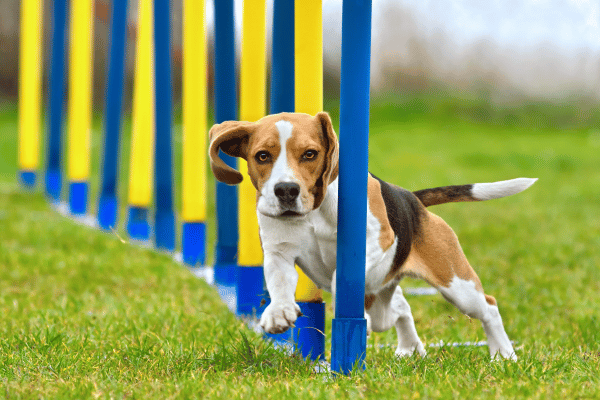Discover essential tips in pet behavior training to enhance your dog or cat’s life. This guide offers expert advice for every stage of your pet’s journey.
Understanding Your Pet’s Behavioral Needs and Signs

Understanding your pet’s behavior is crucial. Firstly, observe their daily habits and interactions. Dogs and cats communicate differently, so it’s important to recognize these unique signs. For instance, a dog wagging its tail usually indicates happiness, while a cat might express contentment through purring. These observations are the foundation of effective pet behavior training, allowing you to respond appropriately to their needs and moods, thereby strengthening your bond.
Next, consider the life stage of your pet. Puppies and kittens require different training approaches compared to adult dogs and cats. Young pets often need more patience and consistent training routines. For example, while training a puppy, use positive reinforcement techniques like treats and praises. Similarly, kittens respond well to gentle guidance and play-based learning. Remember, pet behavior training is not just about obedience; it’s about understanding and nurturing their natural instincts and behaviors.
Lastly, pet behavior training should include enrichment activities. These activities keep your pet mentally stimulated and physically active. For dogs, try interactive toys or agility courses. Cats, on the other hand, enjoy puzzle feeders or chasing toys. Such enrichment enhances their well-being, reducing potential behavioral issues. Always remember, consistent and loving training is key to a happy, well-behaved pet. Pet behavior training is a journey of mutual understanding and respect.
Creating a Positive Training Environment at Home
Creating a positive training environment at home is essential. Start by designating a specific area for training sessions. This space should be quiet and free from distractions, helping your pet focus. Use this area consistently for training, so your pet associates it with learning and positive experiences. Additionally, ensure that everyone in the household understands and follows the training guidelines. Consistency from all family members reinforces learning and prevents confusion for your pet.
Incorporate training into daily routines. For example, ask your pet to sit before meals or stay when you open the door. These small, consistent training moments integrate discipline into their daily life, making training a natural part of their routine. Also, be mindful of your energy and emotions during training sessions. Pets are sensitive to our moods, and a calm, positive demeanor can significantly enhance the effectiveness of the training session.
Remember, pet behavior training is not just about commands; it’s about communication. Pay attention to your pet’s body language and responses. If they seem stressed or distracted, it might be time to take a break. Positive reinforcement, such as treats or praise, is crucial. Rewarding good behavior makes learning a positive experience for your pet. This approach not only strengthens their skills but also deepens your bond.
Enhancing Skills with Interactive Play and Games
Interactive play is a fantastic way to enhance your pet’s skills. Games like fetch for dogs or laser chasing for cats not only provide physical exercise but also mental stimulation. These activities encourage your pet to think, react, and engage with their environment. It’s also a great opportunity for you to observe their problem-solving abilities and preferences, which can be incredibly insightful for further training and strengthening your bond with them.
Training through play keeps the experience enjoyable and stress-free for both you and your pet. For instance, hide-and-seek can teach dogs patience and impulse control, while puzzle toys can challenge a cat’s intellect. The key is to choose games that suit your pet’s personality and skill level. Gradually increase the complexity of the games to keep them challenged. Remember, the goal is to make learning fun and rewarding, not frustrating.
Consistency in play and training sessions is vital. Regularly scheduled playtimes help your pet anticipate and prepare for learning opportunities. During these sessions, use the “Pet Behavior Training” techniques you’ve been practicing. This consistency reinforces learning and helps your pet understand what is expected of them. Over time, you’ll notice improvements in their behavior and cognitive abilities, making each play session a rewarding experience for both you and your pet.
Pet Behavior Training: Socialization and Exposure
Socialization is a critical aspect of pet behavior training. Exposing your pet to different environments, people, and other animals helps them become well-adjusted and less fearful. Start this process early, especially in puppies and kittens, but remember it’s never too late to begin. Gradual exposure to new experiences in a controlled manner is key. This approach helps prevent overwhelming your pet and allows them to learn at their own pace.
During socialization, observe your pet’s reactions closely. If they show signs of stress or fear, take a step back and try a more gradual approach. Positive reinforcement plays a crucial role here. Reward your pet for calm and curious behavior in new situations. This reinforcement helps them associate new experiences with positive outcomes. Remember, patience is essential. Socialization is a gradual process, and rushing it can do more harm than good.
Finally, consider enrolling your pet in a training class or group play sessions. These structured environments provide excellent opportunities for socialization under professional guidance. They allow your pet to interact with others in a safe, controlled setting. Such experiences are invaluable for their development and can significantly enhance their behavior. Regular socialization not only improves their confidence but also makes outings and interactions more enjoyable for both you and your pet.
Addressing Behavioral Issues with Patience and Understanding
Addressing behavioral issues in pets requires patience and understanding. It’s important to recognize that undesirable behaviors often stem from underlying issues such as anxiety, boredom, or lack of training. Approach these challenges with empathy. Instead of punishment, focus on understanding the root cause. For example, a dog that barks excessively might be doing so out of anxiety or a need for more exercise and mental stimulation.
Consistent training is key to resolving behavioral issues. Establish a routine that includes regular exercise, training, and playtime. This structure helps your pet feel secure and reduces anxiety-driven behaviors. When correcting behaviors, use positive reinforcement. Reward your pet for desired behaviors rather than punishing unwanted ones. This approach not only builds trust but also makes the learning process more enjoyable for your pet, leading to better and more lasting results.
Sometimes, professional help may be needed, especially for persistent or severe issues. Don’t hesitate to consult a veterinarian or a pet behaviorist. They can offer tailored advice and strategies for your specific situation. Remember, pet behavior training is a journey that requires time, patience, and consistency. With the right approach and support, most behavioral issues can be effectively managed, leading to a happier and more harmonious relationship with your pet.
Building Trust Through Gentle Handling and Care

Building trust with your pet is fundamental in pet behavior training. Gentle handling and showing consistent care are key. Start by creating a safe and comfortable environment for your pet. Approach them calmly and speak in a soothing tone. Let them come to you on their terms, especially when they’re new to your home. This respect for their space and pace helps in building a strong foundation of trust and mutual respect.
Incorporate gentle handling into daily interactions. When grooming, feeding, or playing, use these moments to reinforce your bond. For instance, while brushing your pet, maintain a calm demeanor and give them reassurance through soft words and gentle strokes. This not only makes the experience positive but also helps them associate your touch with comfort and safety. Over time, this builds a deeper connection and makes them more receptive to training and guidance.
Remember, trust is a two-way street. Be mindful of your reactions to their behavior. Avoid harsh reprimands or physical corrections, as these can damage the trust you’ve built. Instead, use positive reinforcement techniques in your “Pet Behavior Training” sessions. Consistently rewarding good behavior with treats, praise, or affection encourages them to repeat those behaviors. This approach not only strengthens their trust in you but also enhances their overall well-being and behavior.
Enhancing Communication with Effective Training Techniques
Effective communication is the cornerstone of successful pet behavior training. It’s crucial to understand how your pet communicates and to tailor your training techniques accordingly. Dogs and cats have different communication cues. For dogs, vocal commands and body language are key, while cats respond better to tone of voice and gentle gestures. Paying attention to these differences enhances your ability to convey commands clearly and understand their responses, leading to more effective training.
Use consistent commands during training sessions. Consistency helps your pet understand what is expected of them, reducing confusion and frustration. For instance, choose specific words for commands like ‘sit’, ‘stay’, or ‘come’ and use them consistently. Also, match your verbal commands with clear body language. This combination of verbal and non-verbal cues makes it easier for your pet to comprehend and follow your instructions, facilitating smoother and more effective training sessions.
Remember, patience is key in “Pet Behavior Training”. Each pet learns at their own pace, and it’s important to respect that. Celebrate small victories and progress, no matter how minor they may seem. Positive reinforcement, like treats or affection, when they successfully follow a command, encourages them to keep learning. This patient and positive approach not only strengthens their skills but also reinforces the bond between you and your pet.
Nurturing Well-being Through Diet and Exercise
A balanced diet and regular exercise are pivotal in nurturing your pet’s overall well-being, which directly impacts their behavior. A nutritious diet provides the necessary energy and health for them to engage in training and play. Pay attention to their dietary needs, which can vary based on age, breed, and health status. Consult with a veterinarian to determine the best diet plan. A well-fed pet is more likely to be responsive and active during training sessions.
Exercise is equally important. It’s not just about physical health; it also plays a crucial role in mental stimulation. Regular physical activity helps prevent boredom and anxiety, which can lead to behavioral issues. For dogs, daily walks, runs, or playtime in the park are essential. Cats benefit from interactive play sessions, like chasing toys or exploring new environments. Tailor the exercise to your pet’s interest and ability, ensuring they stay engaged and happy.
Incorporating “Pet Behavior Training” into exercise routines can be highly effective. Use walks or playtime to practice commands and reinforce good behavior. This integration of training into daily activities not only improves their behavior but also enhances their physical and mental health. Remember, a healthy pet is more capable of learning and responding positively to training. By focusing on their diet and exercise, you’re setting a strong foundation for their overall behavior and well-being.
Pet Behavior Training: Advanced Techniques and Tricks
Once your pet masters basic commands, consider introducing advanced techniques and tricks. This not only keeps training sessions engaging but also challenges their mind, enhancing cognitive abilities. For dogs, you might introduce agility training or teach them to respond to hand signals. Cats can learn to navigate obstacle courses or respond to more complex commands. These advanced activities provide mental stimulation and can significantly improve their agility, concentration, and overall behavior.
Training advanced techniques requires patience and creativity. Start with simple versions of a trick and gradually increase complexity. Use positive reinforcement consistently to encourage and reward their efforts. If a technique seems too challenging, break it down into smaller steps. Remember, the goal is to make learning enjoyable and rewarding. Celebrate each achievement, no matter how small, to keep your pet motivated and engaged in the learning process.
Incorporating play into training is another effective strategy. Turn training sessions into a game, where learning new tricks earns them rewards or playtime. This approach keeps their interest high and makes training feel like a fun activity rather than a chore. With “Pet Behavior Training”, always be mindful of your pet’s mood and energy levels. If they seem tired or uninterested, give them a break and try again later.
Fostering Emotional Health in Pets Through Training
Fostering emotional health is a vital aspect of pet behavior training. Pets, like humans, experience a range of emotions that can influence their behavior. Training sessions should therefore not only focus on physical commands but also on understanding and managing their emotional states. For example, teaching a pet to remain calm in various situations can significantly reduce anxiety-driven behaviors. Recognizing signs of stress or discomfort and responding appropriately is crucial for their emotional well-being.
Emotional training involves creating positive associations with various experiences. Introduce new environments or situations in a controlled and reassuring manner. If your pet shows signs of fear or anxiety, provide comfort and gradually expose them to the situation until they feel more at ease. This method helps them build confidence and resilience. Additionally, ensure that your pet has a safe space in your home where they can retreat and feel secure.
Consistency and routine are also important for emotional health. Establish a daily routine that includes time for play, relaxation, and “Pet Behavior Training”. This structure provides a sense of security and predictability, which can be comforting for pets. Remember, emotional training takes time and patience, but the rewards are significant. A pet that feels emotionally secure is more likely to exhibit positive behavior and enjoy a stronger bond with their owner.
Integrating Routine Health Checks in Behavior Training
Integrating routine health checks into your pet’s behavior training is essential. Regular health assessments ensure that your pet is physically capable of participating in training activities. Sometimes, changes in behavior can be indicators of underlying health issues. For instance, a decrease in activity or responsiveness could signal health problems. By staying on top of their health, you can adjust training methods accordingly and ensure that your pet is always learning in a comfortable and safe environment.
During health checks, pay attention to any advice your veterinarian gives regarding your pet’s physical abilities and limitations. This information is invaluable for tailoring your training approach to suit their needs. For example, if your pet has joint issues, you might need to modify exercises to be less physically demanding. Understanding these aspects helps prevent injury and ensures that training remains a positive and beneficial experience for your pet.
Remember, “Pet Behavior Training” isn’t just about teaching commands; it’s about caring for the whole pet. This includes their physical, mental, and emotional well-being. Regular vet visits and health checks are a crucial part of this holistic approach. They not only help in maintaining your pet’s overall health but also contribute to more effective and responsive training, leading to a happier, healthier pet.
Summary
In conclusion, “Pet Behavior Training” is a comprehensive journey that encompasses much more than just teaching commands. It’s about building a deep, understanding relationship with your pet. Through consistent training, positive reinforcement, and understanding your pet’s unique needs, you can significantly enhance their behavior and well-being. This journey not only leads to a well-behaved pet but also fosters a bond of trust and mutual respect between you and your furry companion.
Remember, every pet is unique, and what works for one may not work for another. Patience, persistence, and adaptability are key. Celebrate the small victories and learn from the challenges. If you ever feel overwhelmed, don’t hesitate to seek advice from professionals like veterinarians or animal behaviorists. Their expertise can provide valuable insights and tailored strategies to aid in your training endeavors.
We encourage you to continue exploring and learning about “Pet Behavior Training”. Engage with our community, share your experiences, and learn from others. If you found this article helpful, please visit our other resources for more tips and tricks. Your feedback and interaction are invaluable to us. Let’s work together to create a world of well-trained, happy pets and informed, caring pet owners.
III. Dog and Cat Care FAQs
- Which breed of dog and cat need the most care?Breeds with extensive grooming needs, health issues, or high energy levels, such as Persian cats and Border Collies, may require more care. It's important to research specific breed needs before adopting.
- Are there breeds of dogs and cats that are more fragile?Yes, some breeds are more prone to health issues or have temperaments that require special attention. For example, Sphynx cats and English Bulldogs often need more care due to skin and respiratory issues, respectively.
- Where is it easier to take care of a cat and dog, house or apartment?Both environments can be suitable for cats and dogs with proper care. Apartments may require more effort to provide dogs with enough exercise, while cats often adapt well to indoor living with appropriate enrichment.
- Can cats live free or do they need to stay indoors?While some cats can adapt to outdoor life, indoor living is generally safer and can prevent risks like traffic, predators, and diseases. Providing a stimulating indoor environment is key for indoor cats.
- Do mixed breed cats and dogs need vaccination?Yes, all cats and dogs, regardless of breed, require vaccinations to protect against common diseases and maintain their health.
- What regular care do dogs need?Dogs need regular exercise, a balanced diet, routine veterinary check-ups, vaccinations, grooming, and dental care. Social interaction and mental stimulation are also important for their well-being.
- What is daily care for dogs?Daily care for dogs includes providing fresh water and meals, regular bathroom breaks, exercise, playtime, and companionship. Consistent training and grooming routines are also important.
- What is a healthy dog routine?A healthy dog routine includes regular feeding times, daily exercise, consistent training sessions, socialization opportunities, and regular veterinary care to maintain physical and mental health.
- What is canine health?Canine health encompasses the physical and mental well-being of dogs, including nutrition, exercise, preventive medicine, and care for illnesses and injuries.
- How do you take care of a cat's health?Taking care of a cat's health involves providing a balanced diet, regular veterinary visits for vaccinations and check-ups, parasite control, and attention to grooming and dental care. Providing a safe and enriching environment is also crucial.
- What is routine care for a cat?Routine care for a cat includes feeding a balanced diet, providing clean water, maintaining a clean litter box, regular grooming, and ensuring they have access to safe spaces for play and rest.
- What do cats need to stay healthy?Cats need a balanced diet, regular veterinary care, mental and physical stimulation, and a safe environment. Regular grooming and attention to their emotional well-being are also important.
- What is cat in healthcare?"Cat" in healthcare could refer to "Computerized Axial Tomography" (CAT scan), which is a diagnostic imaging procedure used in human medicine. In the context of pet care, it typically refers to the general health and medical care of feline pets.

Join Dan Morgan at dwfocus.com, your hub for ‘4 paws and owners’ wisdom! Explore a world where pet care meets expert insights, crafted by Dan, a seasoned vet with a heart for animals. Engage with stories, tips, and advice that every pet owner needs. From playful pups to graceful cats, Dan Morgan guides you through the joys and challenges of pet parenting. Embrace your love for pets with Dan’s expert guidance on dwfocus.com. #4PawsAndOwners #DanMorganPetExpert #dwfocus







